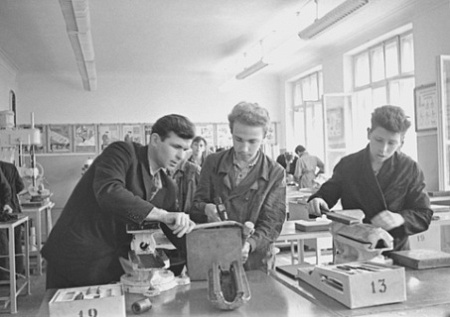
Since September 1, 2024, instead of the subject “Technology”, “Labor” has been taught in schools. I hope that in the near future, the Ministry of Education of the Russian Federation will tell the public how this transition went, what has changed conceptually in teaching this subject, and what its new content is.
The school year is ending. It’s time to take stock and outline which sections and topics need to be improved.
It is equally important to find out what equipment was added to the former classrooms of technology and how the teaching of this subject, “Labor,” came closer to the labor lessons that the older generation of Russians remembers, and they kindly remember labor lessons. Especially the female half.
After graduating from the eighth grade, all the girls knew how to sew simple clothes and cook any dish. And not only. During the labor lessons, they studied the devices of sewing machines and food processing devices. Many teachers introduced their students to the basics of fashion design and apartment furnishing. I traveled a lot in the USSR at the time and saw that everywhere the classrooms for girls were well equipped.
The students highly appreciated this knowledge and gratefully remember their “Home Economics” teachers. Unfortunately, this beautiful name was later changed to a bureaucratic one – “Service labor.”
The situation was worse with educational workshops for boys. Carpentry and locksmith workbenches were often large, out of age, and in poor condition. However, a lot depended on the manufacturer of this carpentry and plumbing equipment. So, the machines produced by Uchtekhprom of the RSFSR were of very decent quality. However, there was a problem with tools, especially carpentry. Therefore, many teachers made tools with boys in grades 7 and 8 that were much more convenient for students.
Despite the shortcomings in the organization of lessons and the equipment of workplaces, most of the boys loved labor lessons. They have seen from their own experience how their work skills are being improved and their knowledge of technology and industrial production is expanding. In labor lessons, in the process of making various objects, teenagers applied the knowledge gained in mathematics and physics lessons.
And we started reading the drawings from the 5th grade. After all, the manufacturing process begins with studying the shape and size of the object of labor, the sequence of work operations to change the workpiece to the finished product. From the first lessons, fifth graders learned graphic literacy by working on drawings and technological maps. Thus, over the years, an understanding of the production process at enterprises was formed in their minds.
Already in the 5th grade, the boys learned how to work on a drilling machine. In high school, while working on lathes for wood and metal, they got acquainted with their design and safety regulations. At the same time, various mechanisms were studied that convert rotational movements into translational or vice versa, increase or decrease the speed of movement, increase the force of pressure or impact. The students’ technical and industrial horizons expanded when studying the properties of various metals and wood materials, while studying the design of tools and devices.
Working in school workshops, future fathers of families successfully mastered complex technological operations, persevered, overcame the resistance of the material, and developed creative abilities by solving technical problems that inevitably arise during the work process. It is known that handwork is directly related to thinking. It was in the process of labor that a skilled person developed into a reasonable person.
I did not start this conversation to advertise labor training, which was in a Soviet school. Since 2024, labor lessons have been reintroduced in schools. And this is right, because everyone understands that it is necessary to prepare children for work from an early age. But that is why it is very important that the subject reflects its content.
If such a name of an academic subject does not raise questions in elementary school, then I consider the name of this subject – “Labor” in secondary schools to be incorrect. In cooking rooms, fabric processing rooms, and school workshops, boys and girls are introduced to the basics of industrial production. Therefore, the subject should be called “Fundamentals of production”. In addition to a more precise semantic content, such a name will add weight to the subject in the eyes of students and parents.
